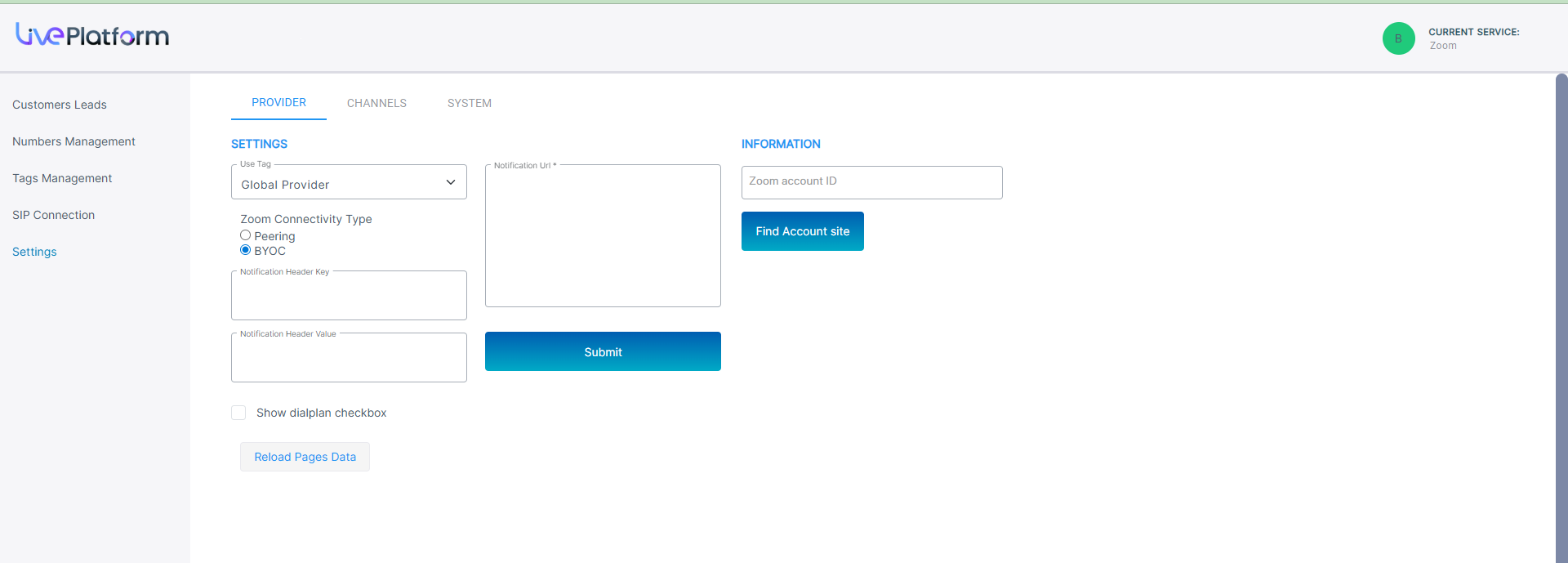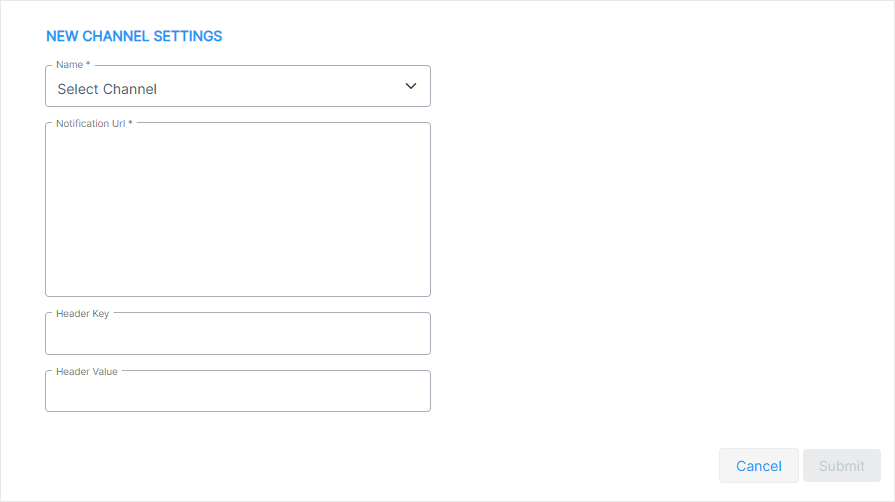Configuring Zoom Settings
The Settings page lets you configure Zoom settings for the Provider, Channel and System entities. You can trigger an email to the customer CRM each time a new customer lead is generated.
| ➢ | To configure global settings: |
| 1. | In the Navigation pane, choose Settings. |

| 2. | From the Use Tag drop-down, choose one of the following: |
| ● | None |
| ● | Global Provider: Configure tags at the Global (AudioCodes) level |
| ● | Channels: Configure tags at the Channel level |
When end customers onboard the Zoom Phone service, they are prompted with the appropriate Tag dialog according to this configuration.
| 3. | From the Connectivity Type drop-down, choose one of the following: |
| ● | Peering: Connect calls using the Service Provider SBC. For this configuration, customers cannot configure SIP Connections and SBC Scripts, only Calling Profiles. |
| ● | BYOC: Connect calls using the dedicated customer SBC. For this configuration, customers can configure SIP Connections, SBC Scripts and Calling Profiles. |
After applying confirmation, the following confirmation message is displayed:

The following figure displays the menu after configuring the BYOC option.

| 4. | Configure other parameters according to the table below and then click Submit. |
|
Parameter |
Description |
|---|---|
|
Notification Header Key |
Header authentication key (header key: runkey) to connect to the destination address. |
|
Notification Header Value |
The passkey in the Header Value. |
|
Show Dialplan Check box |
Shows or hides the Use SBC Dialplan check box in the Upload Number dialog box. |
|
Notification URL |
The destination URL for the HTTP POST. |
|
Reload Pages Data button |
Click to refresh the page. |
|
Zoom Account Information |
Enter the Zoom Account ID for which you wish to search. |
| 5. | Select the Channels tab; a list of service names and their corresponding Notification URLs are displayed. Enter text in the search field to search for a specific service. |
| a. | To add a new channel, click Add; the New Channel Settings dialog box is displayed: |

| b. | Configure the new channel according to the parameters in the following table: |
|
Parameter |
Description |
|---|---|
|
Name |
Select the channel name. |
|
Notification URL |
The destination URL for the HTTP POST |
|
Header Key |
Header authentication key (header key: runkey) to connect to the destination address. |
|
Header Value |
The passkey in the Header Value. |
| c. | Click Submit. |
| 6. | Select the System tab: |

| 7. | Click Reload to reload the list of Global sites. |